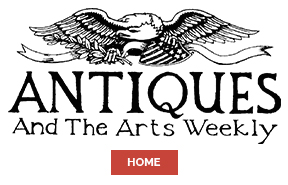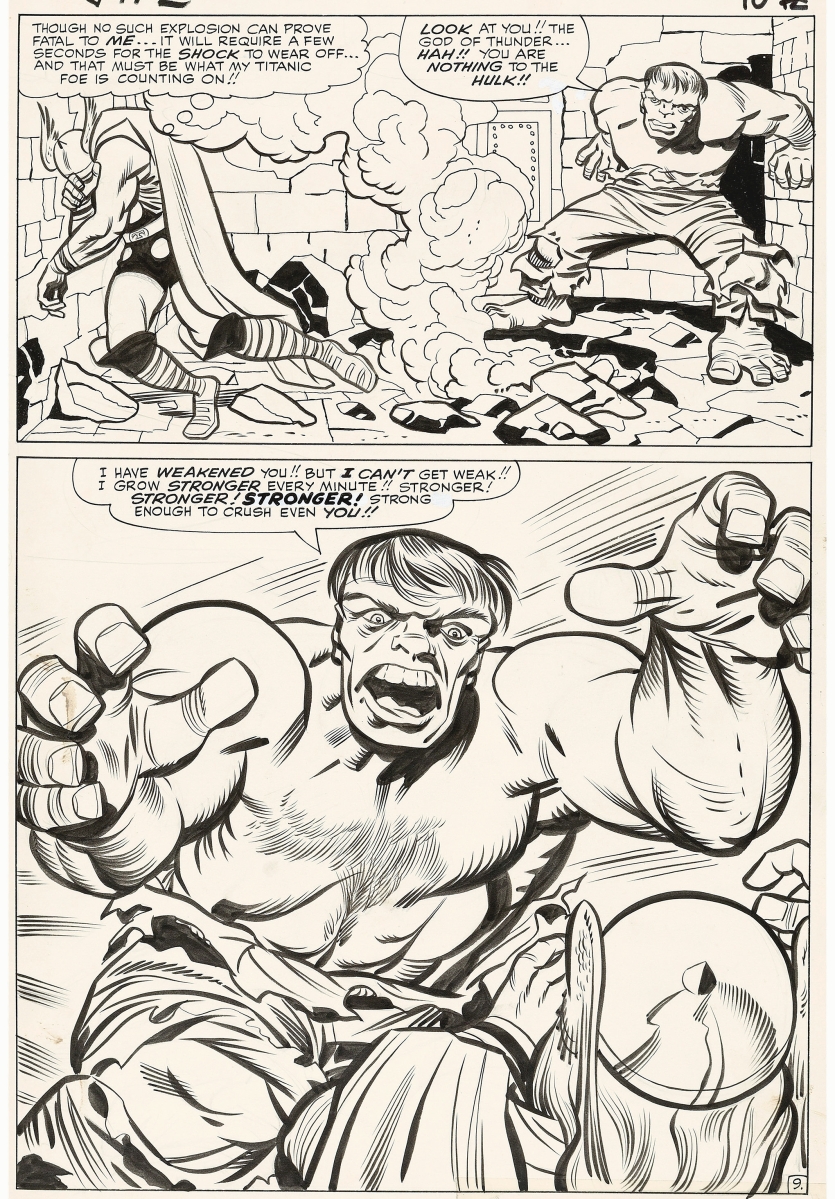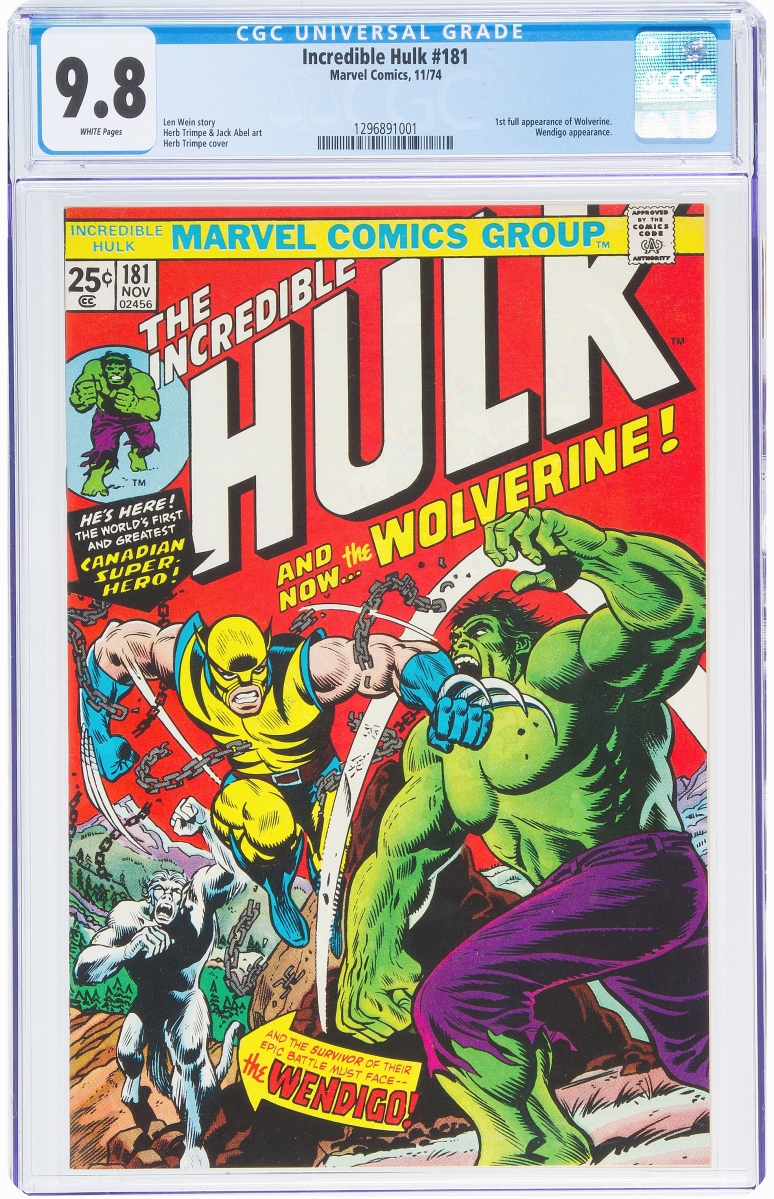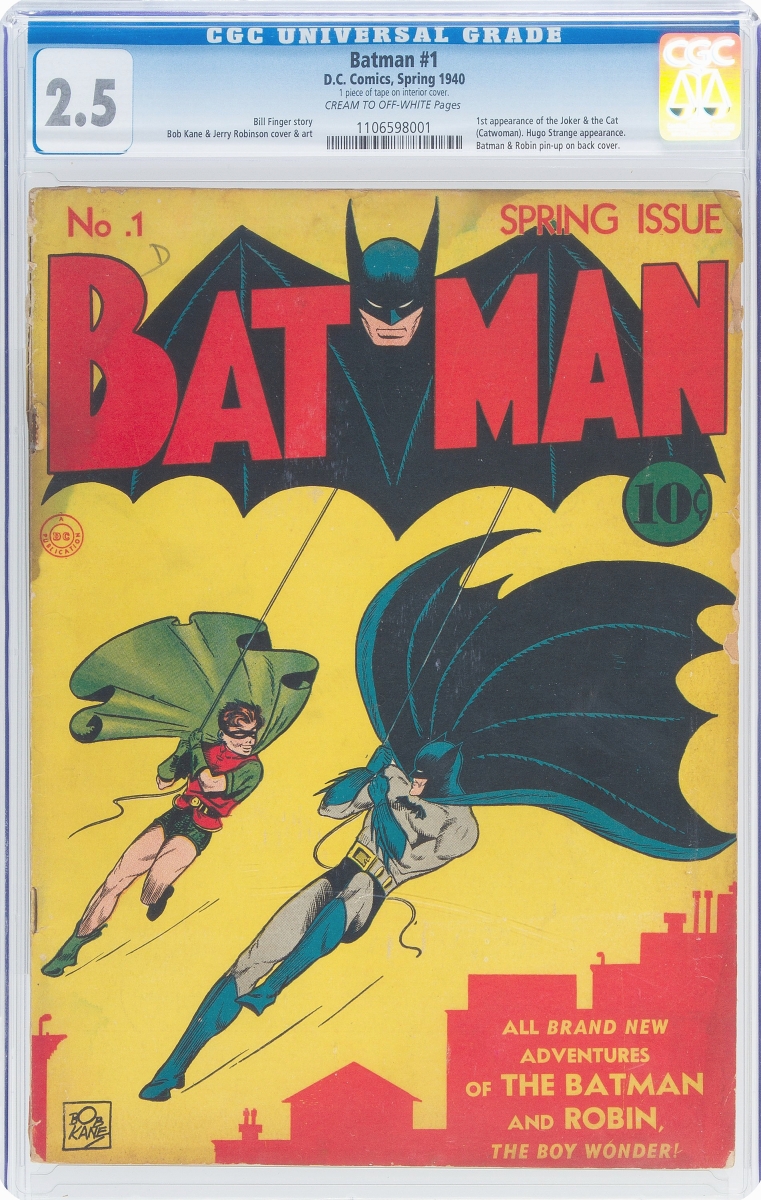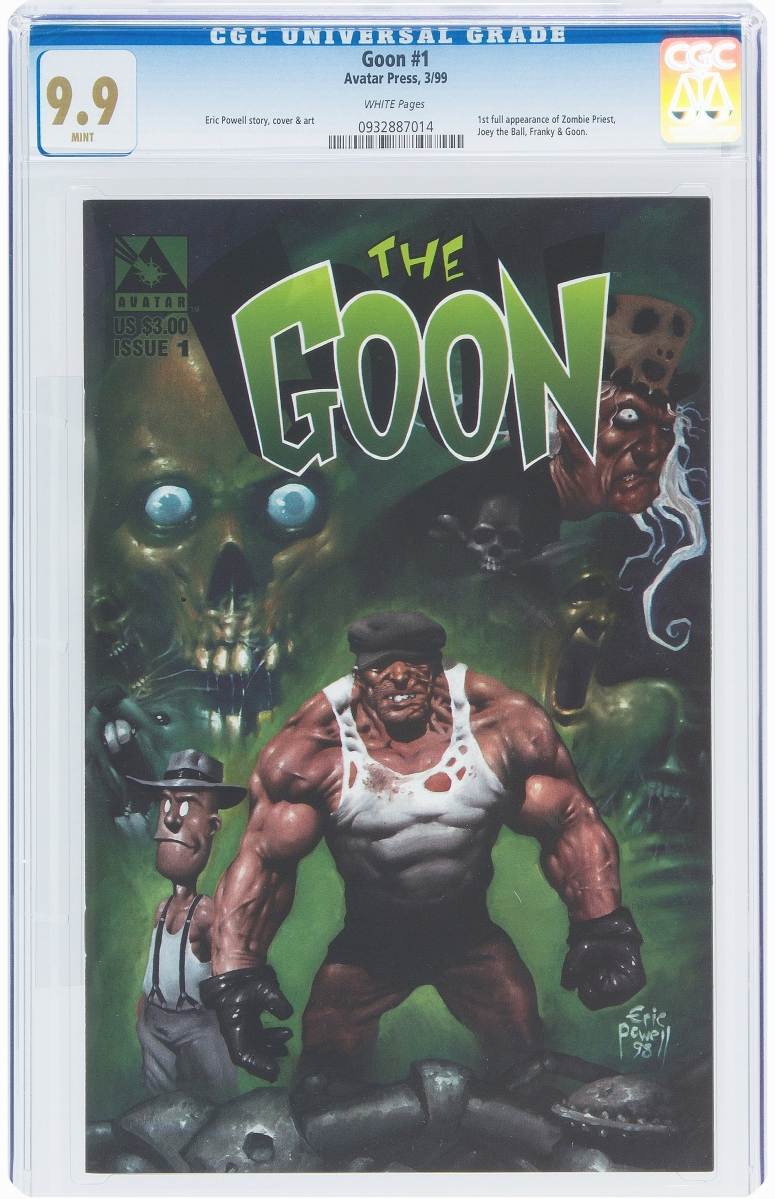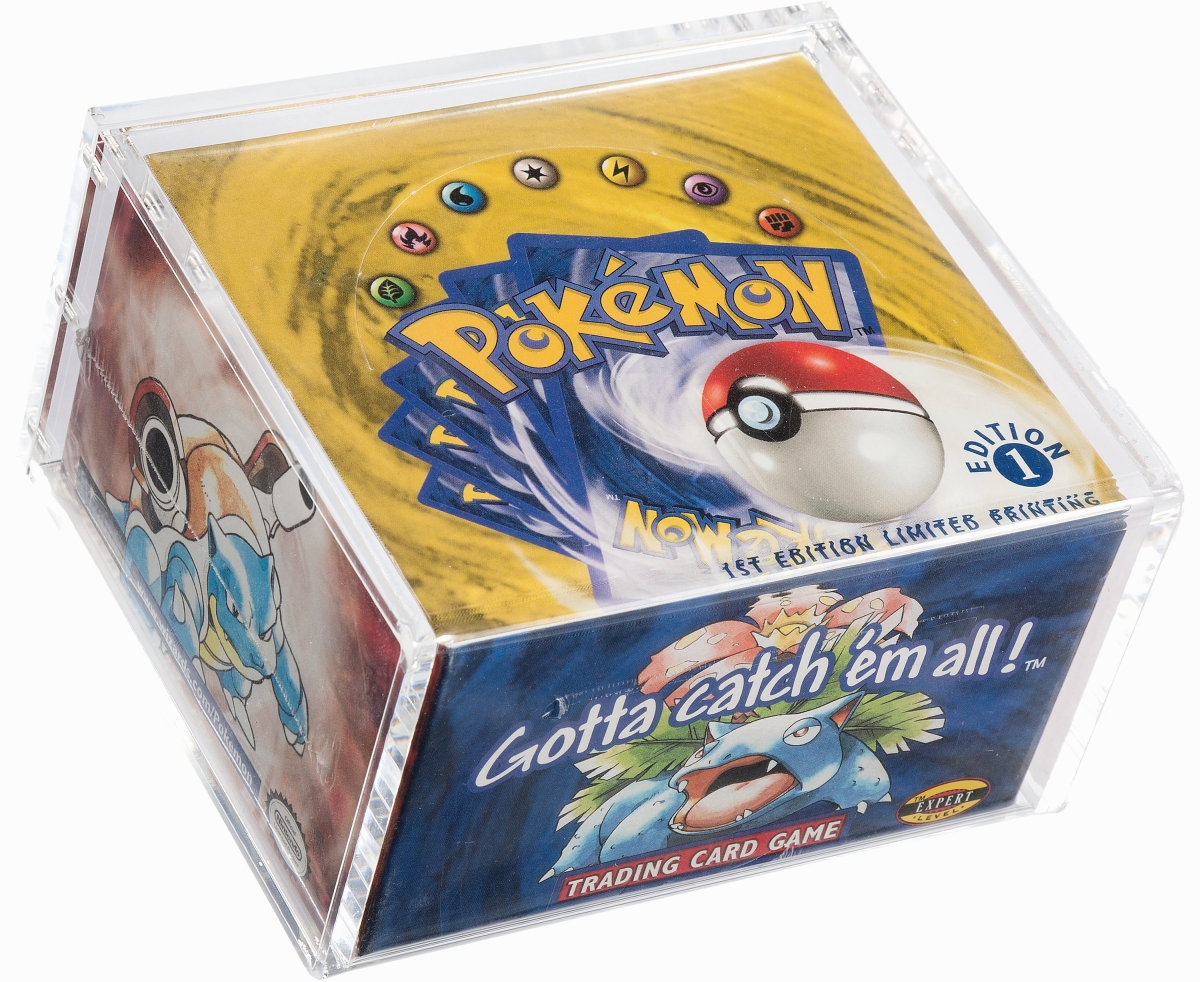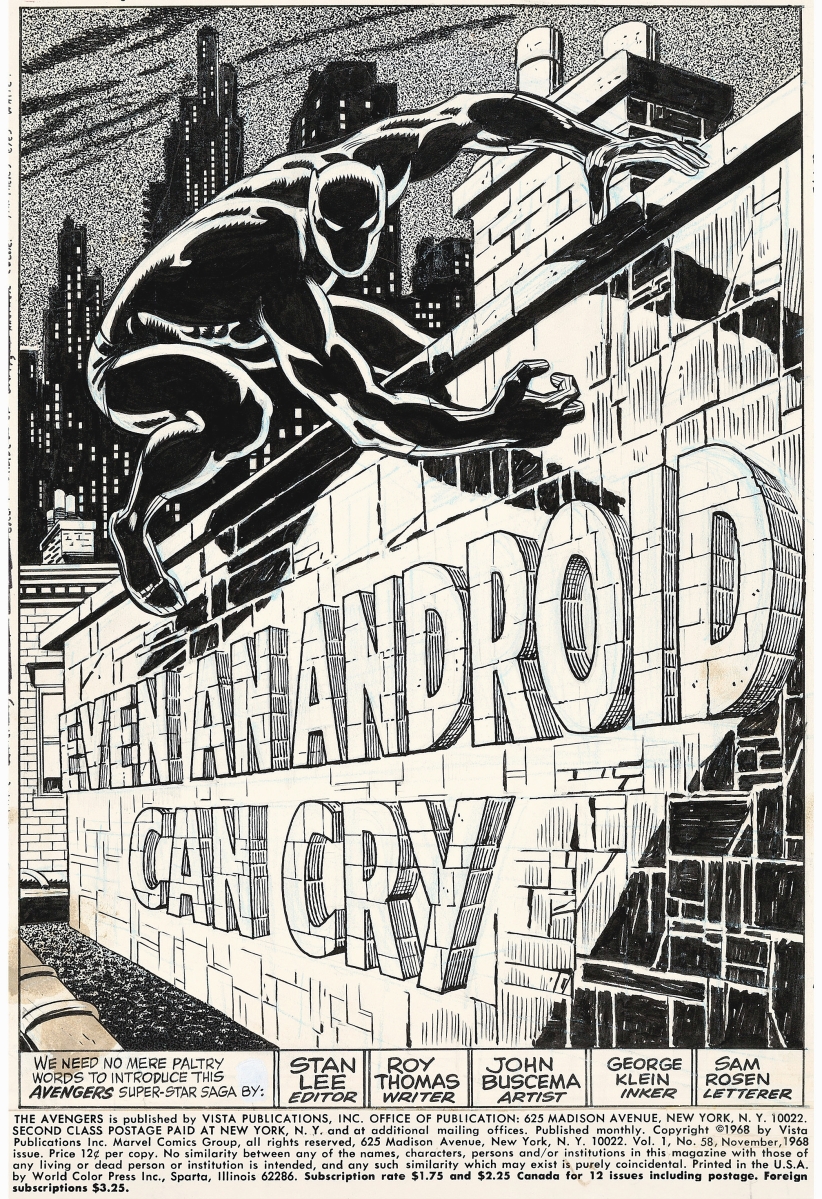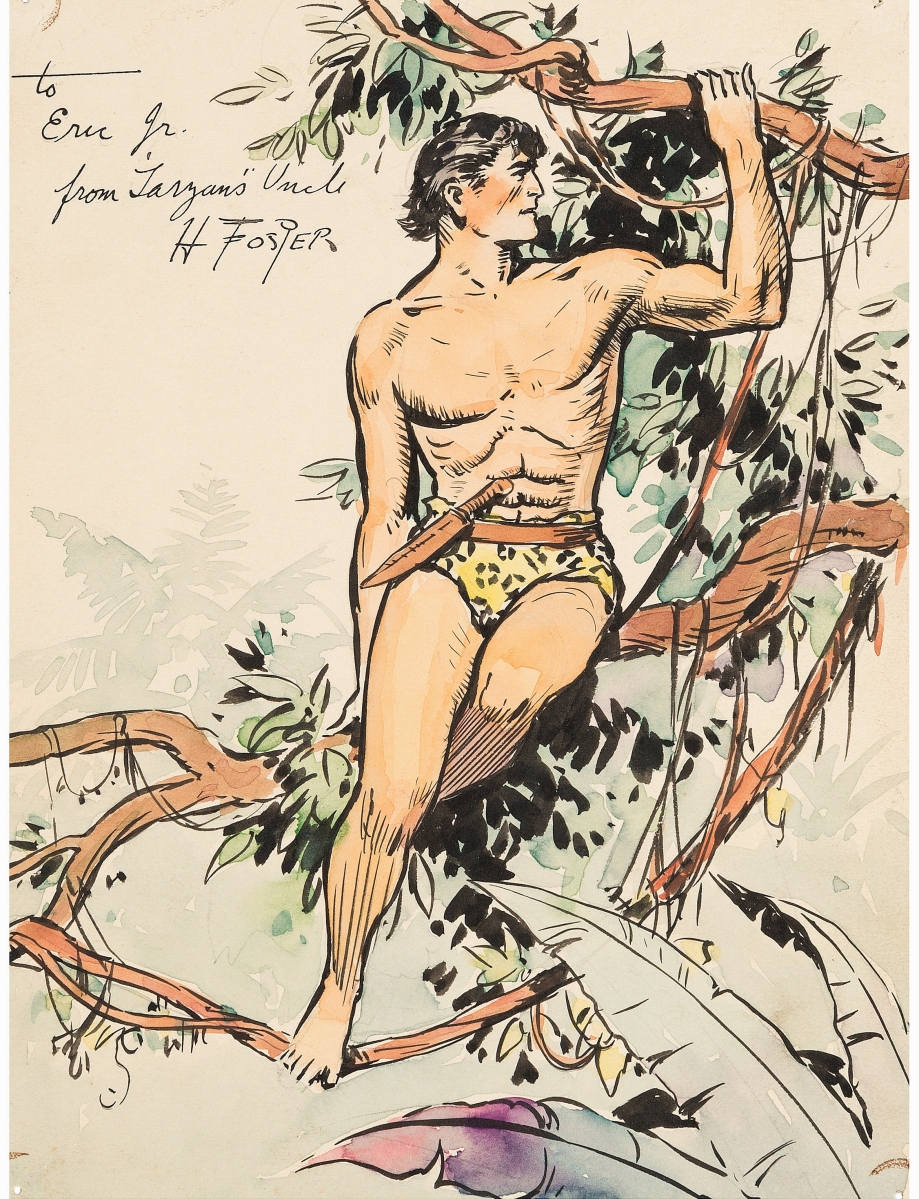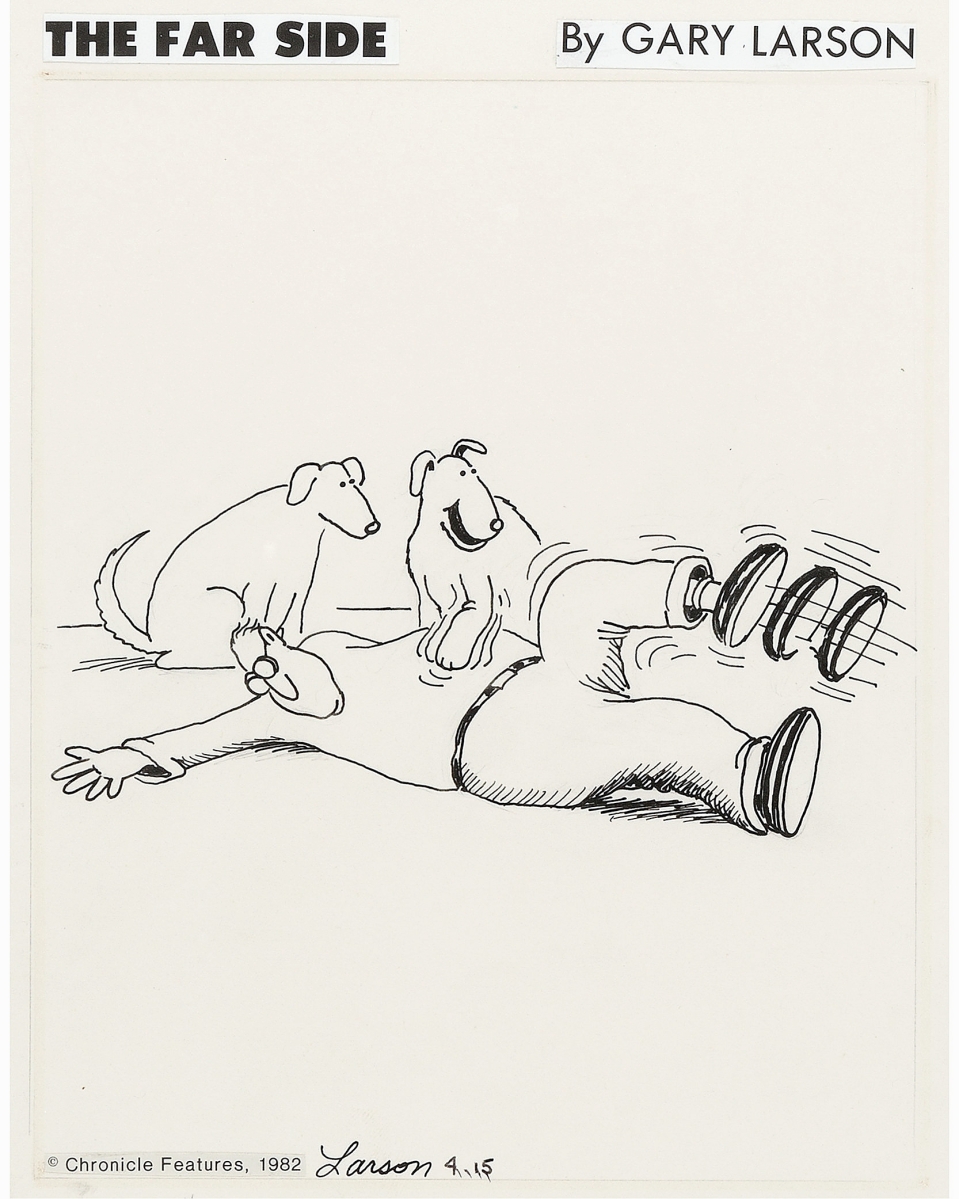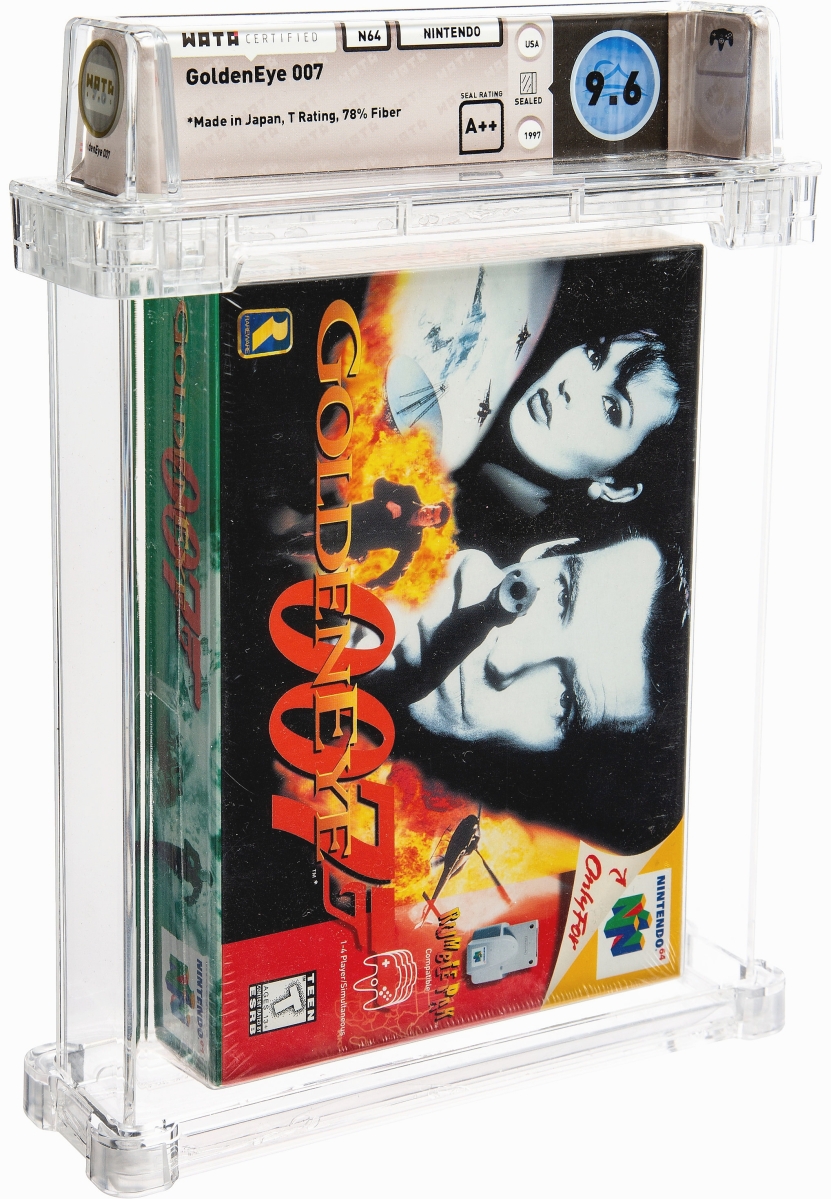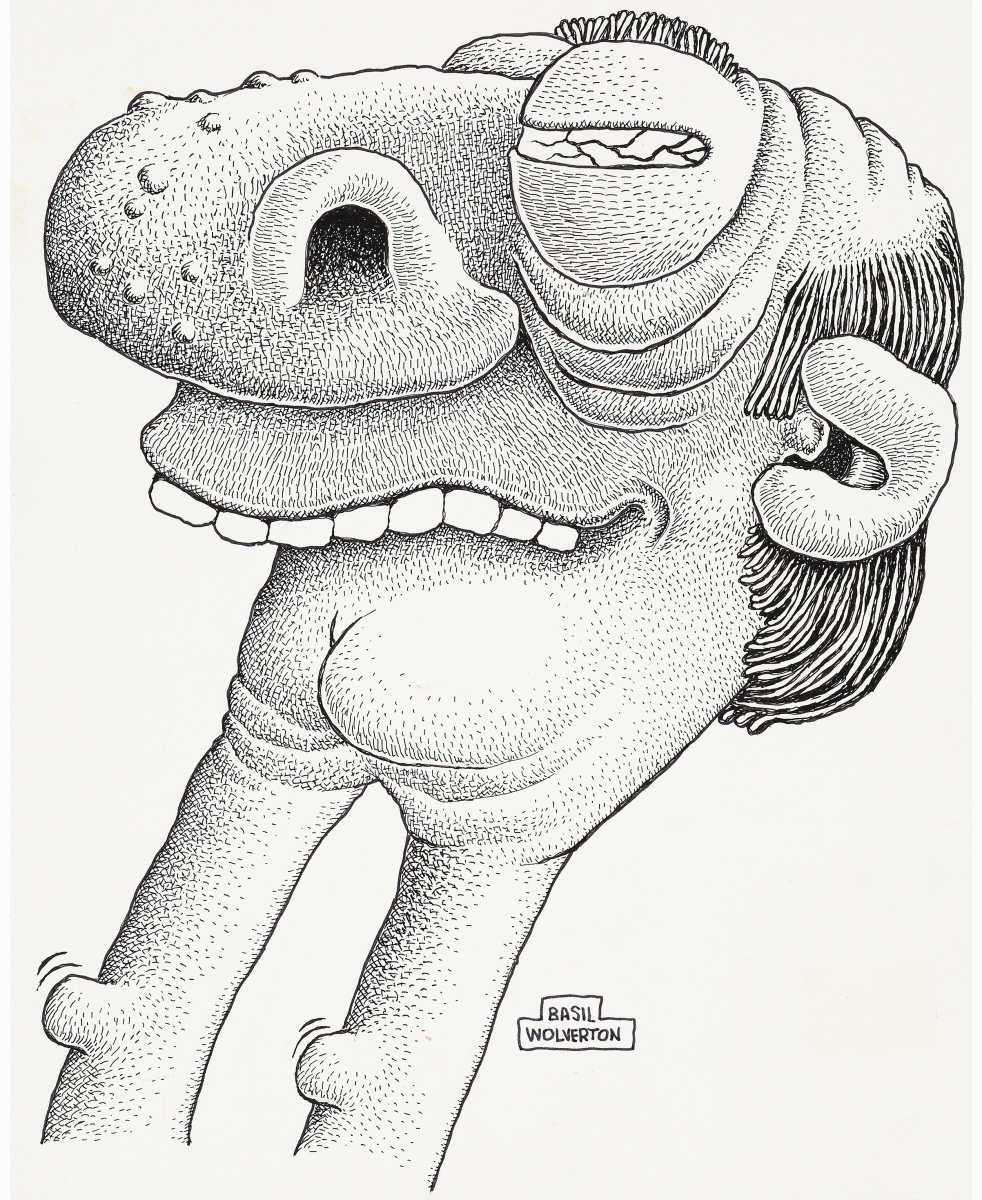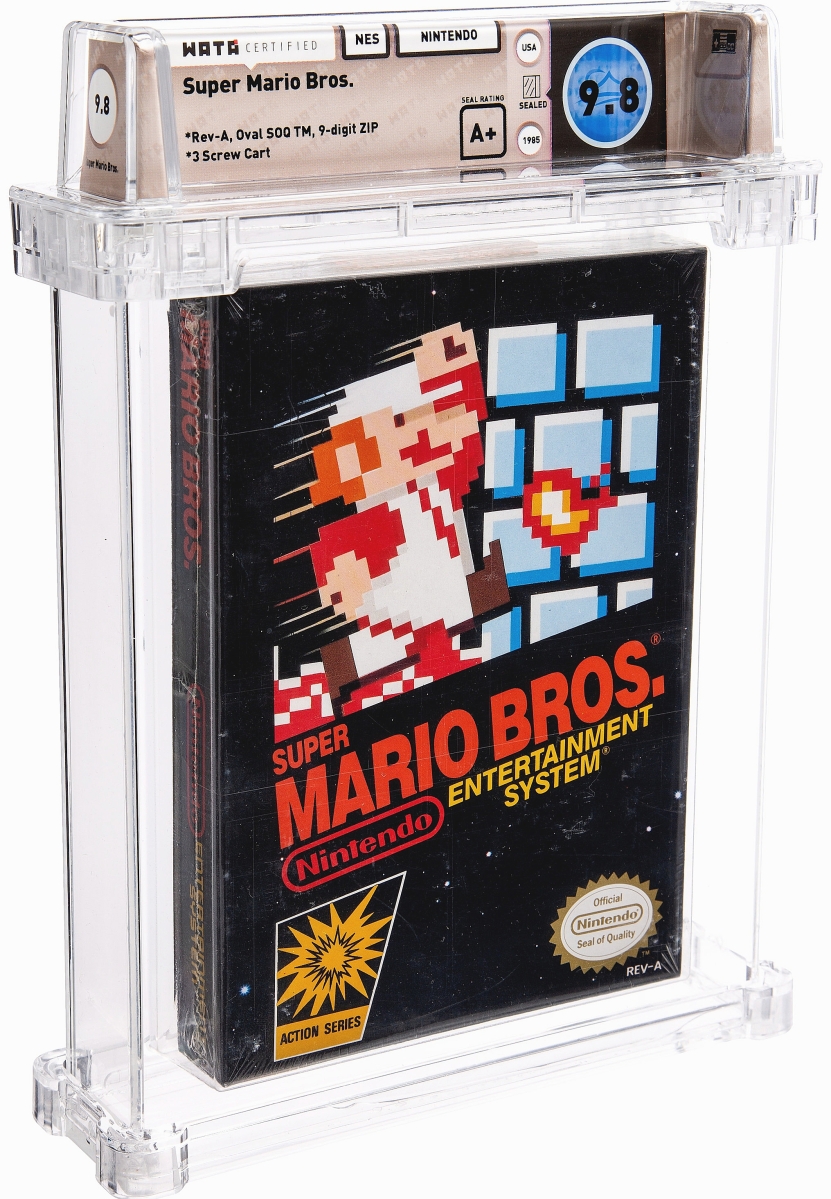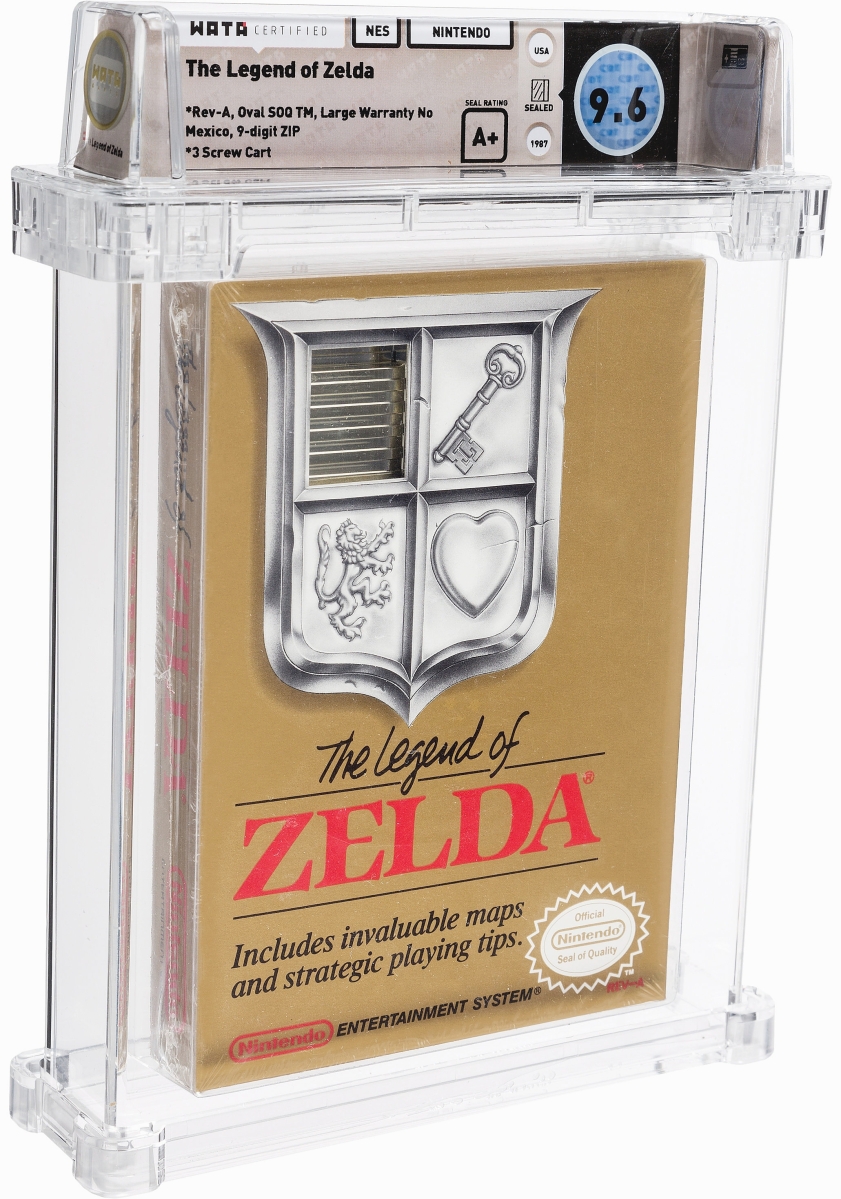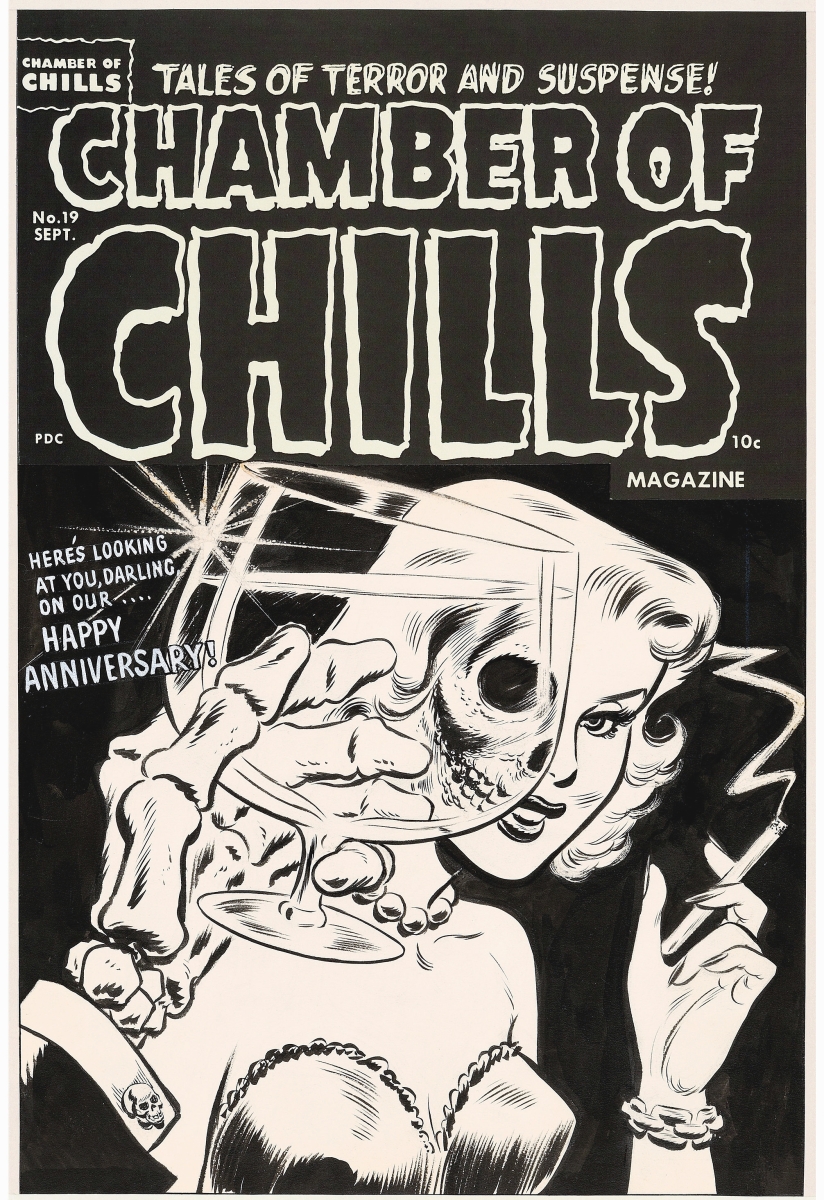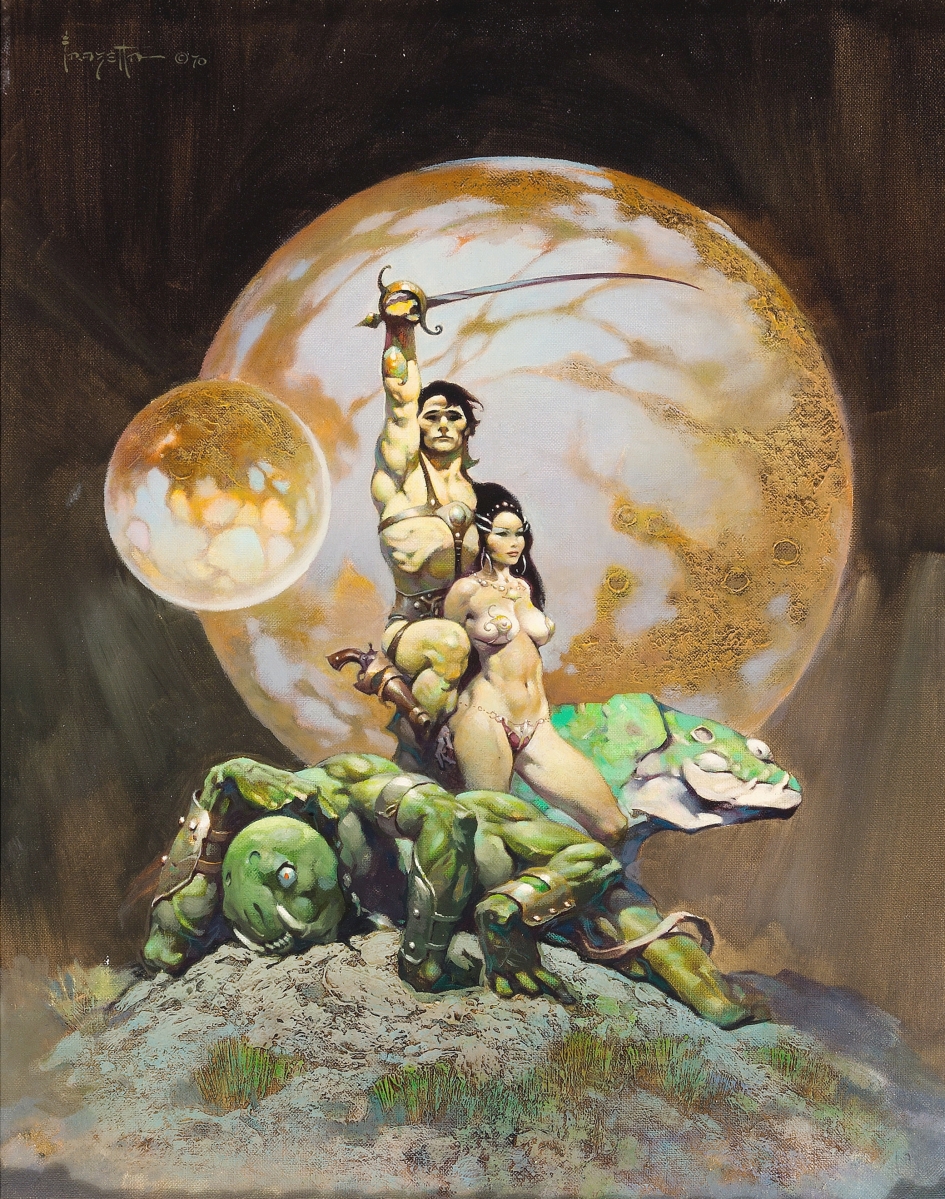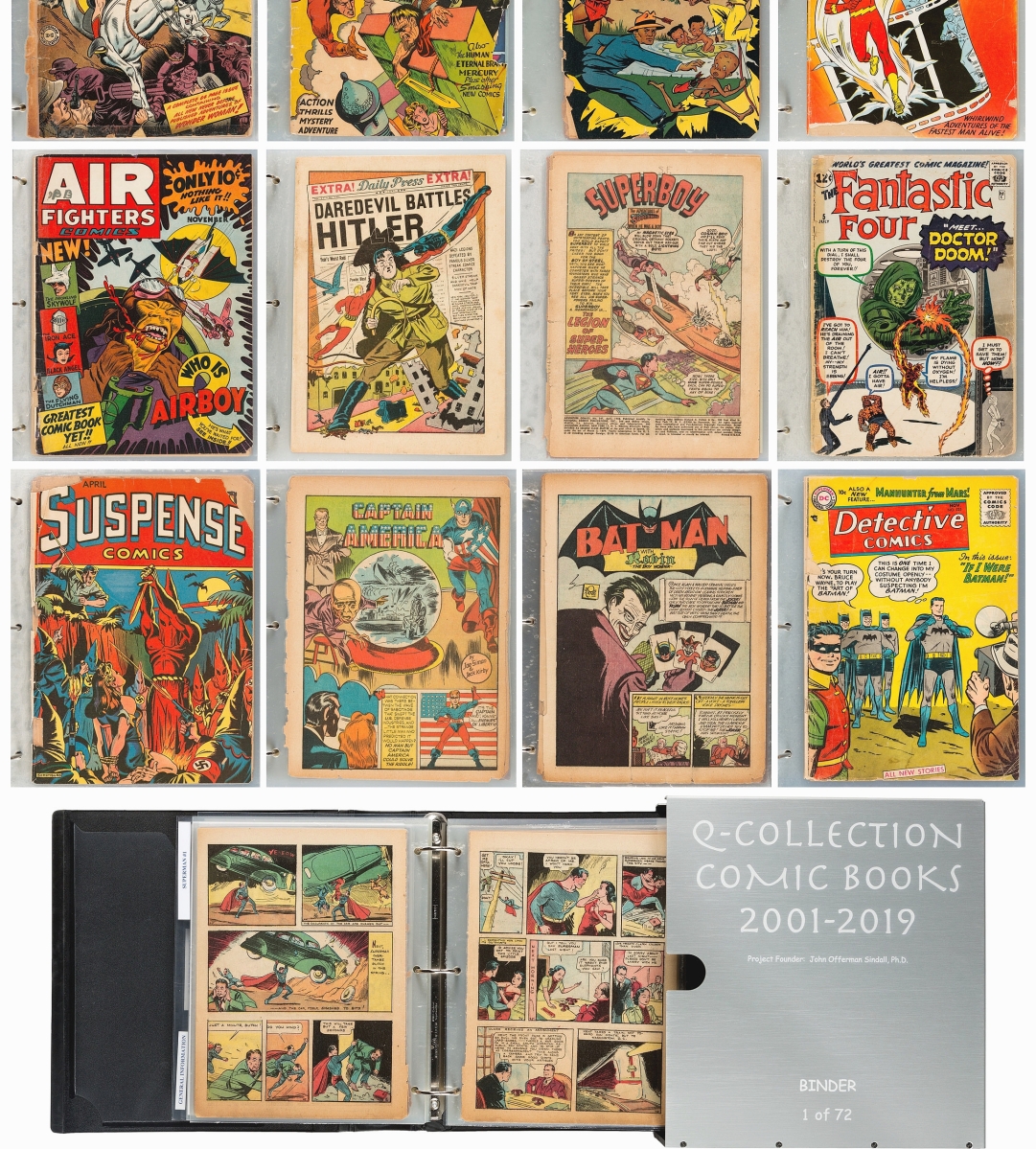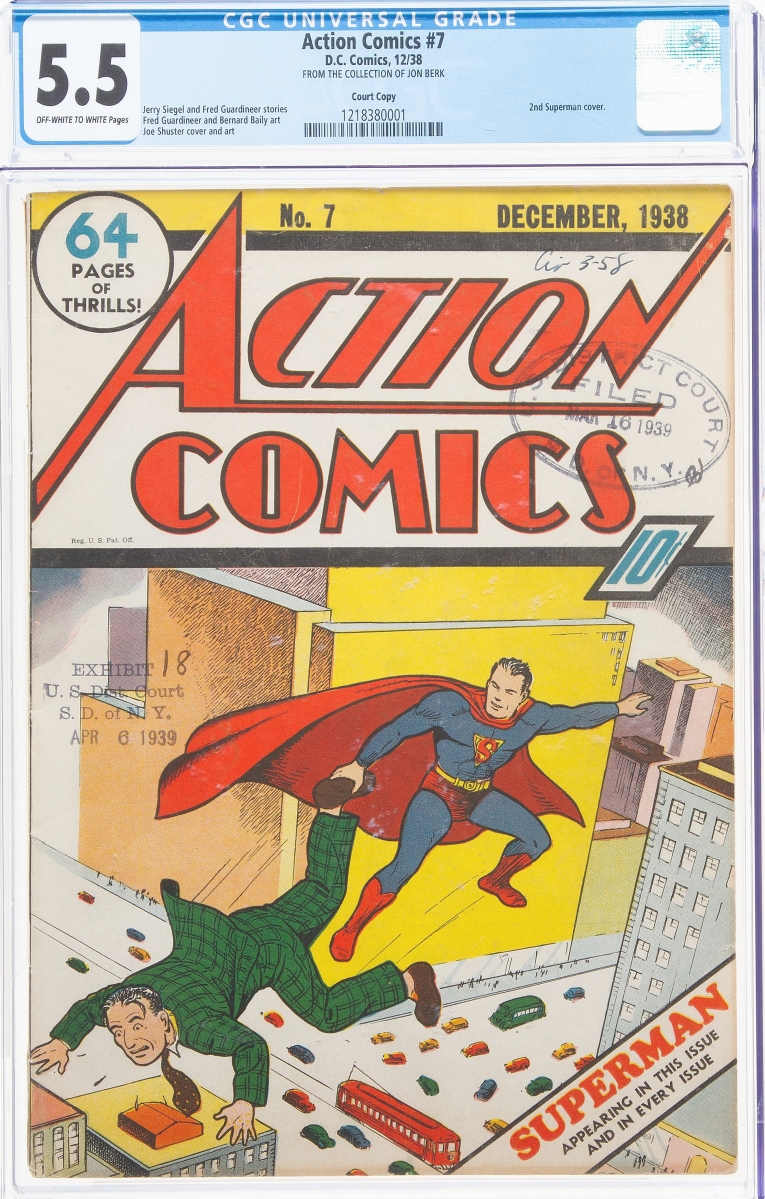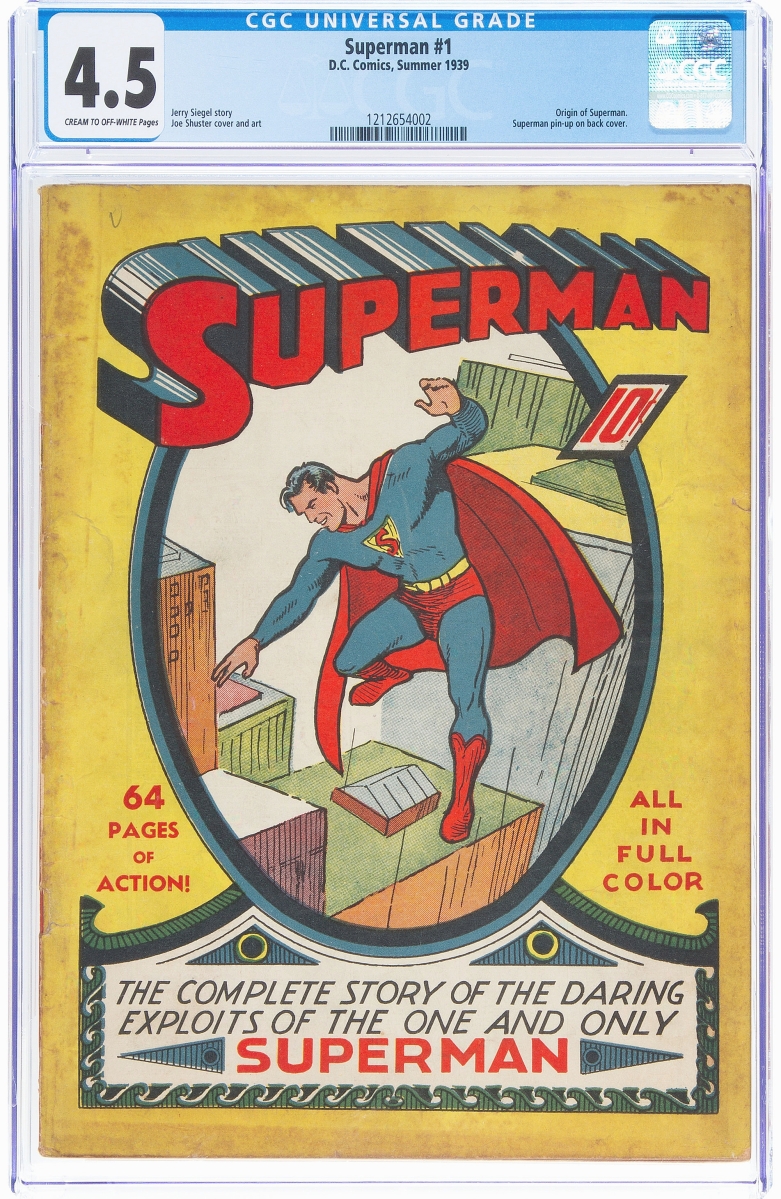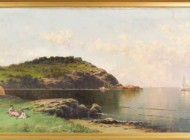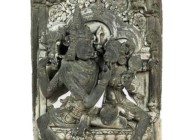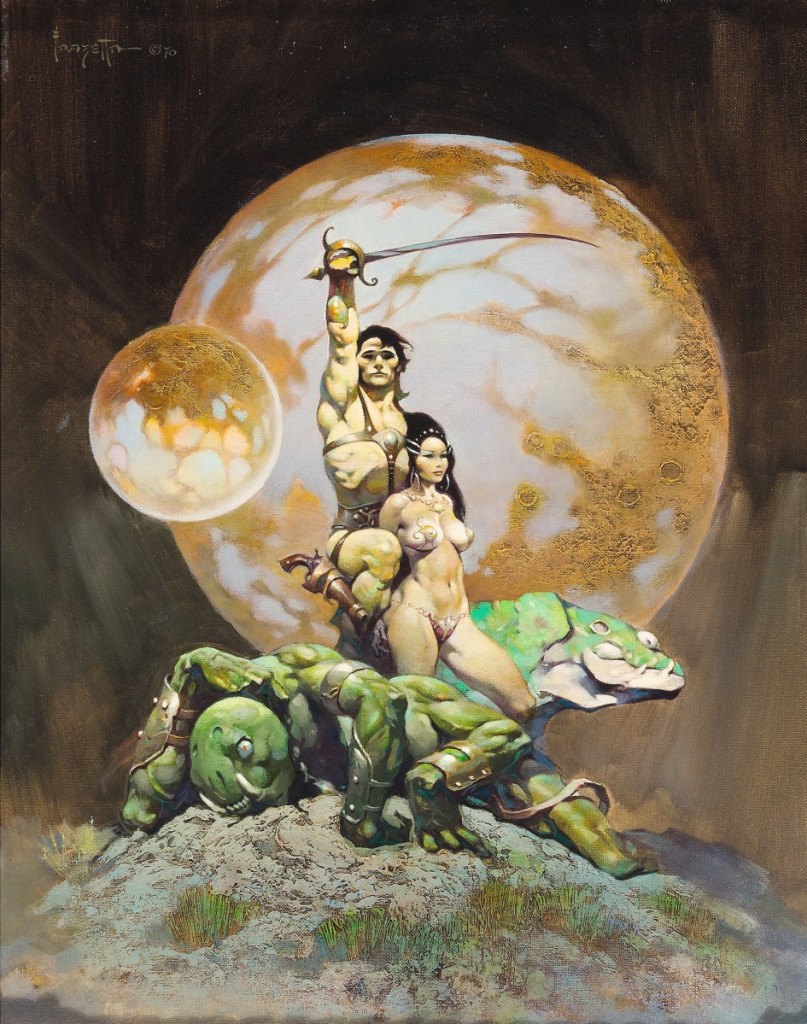
Leading the sale was Frank Frazetta’s original oil on canvas painting “A Princess of Mars,” which brought the third highest price of the artist’s career at auction with $1.2 million. This is the second version of the work that the artist created; the first used as the cover for Doubleday’s 1970 re-release of Edgar Rice Burroughs’ A Princess of Mars. The artist related that he liked this second version better than the first.
Review by Greg Smith, Catalog Photos Courtesy Heritage Auctions
DALLAS – Every one of the 1,074 lots sold in Heritage Auctions’ four-day marathon Comics and Comic Art sale September 10 to 13 – the auction grossed just over $9.5 million as it set a smattering of records in the process.
The auction house said that the sale attracted a noteworthy 4,400 bidders who were all in on the action on the firm’s native bidding platform at www.ha.com. The sale was the fourth of five signature comic auctions that the auction house will offer this year with the department averaging about $10 million each round.
The auction was led by yet another notable result for American fantasy and science fiction artist Frank Frazetta (1928-2010), whose “A Princess of Mars” painting sold for $1.2 million. It is the fourth million-dollar result that Heritage has produced in four years for Frazetta, whose auction record stands at $5.4 million, set by Heritage in its May, 2019 sale for “Egyptian Queen.”
“A Princess of Mars” was the second version of the work that Frazetta created following his submission of the first version original to Doubleday Publishing to be used as the cover art for its re-release of Edgar Rice Burroughs’ A Princess of Mars in 1970. The oil on canvas measures 15½ by 19¾.
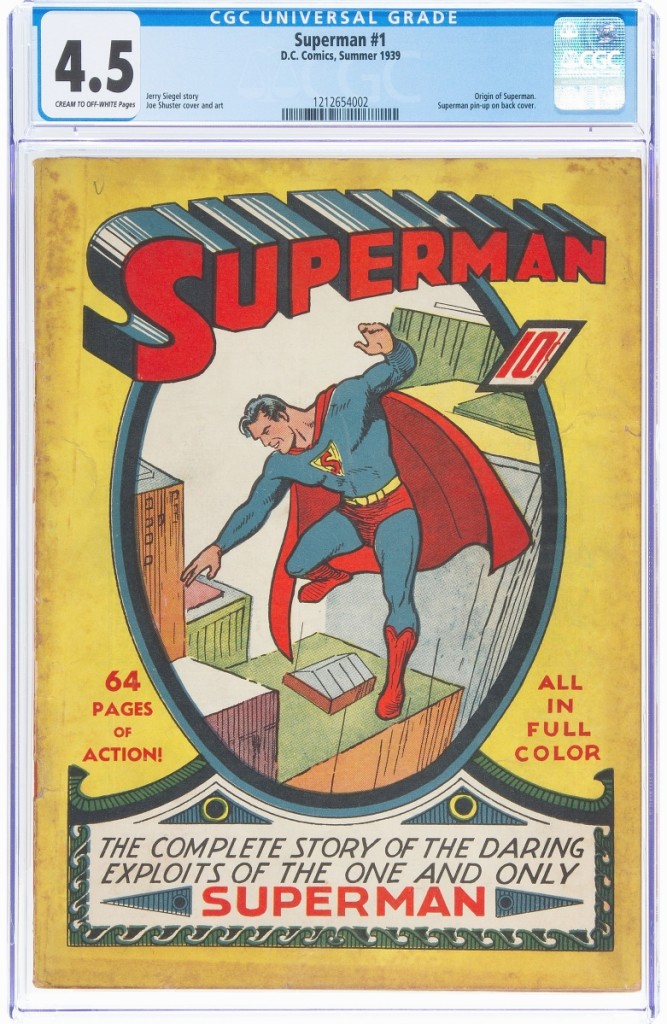
Only 11 issues of Superman #1 are graded higher than the present example at CGC VG+ 4.5, a level it shares with three other known issues. It sold for $336,000.
Frazetta’s pride in his work was a guide throughout his career and extended beyond his life into the secondary market, even to works that come to sale today. His belief that he was a Twentieth Century master led him to request back every painting he ever made from the publisher who commissioned it, thereby receiving compensation for the work while keeping the original to resell or do as he pleased. Even if his early representatives, Joe and Nadia Mannarino, pulled in a $100,000 private sale in the late 1980s, it was not enough, Frazetta thought. It turns out he was right.
The second version of “A Princess of Mars” came to sale from Frazetta’s family. The artist had sold the original first version during his lifetime. Frazetta told Joe and Nadia Mannarino, who now head Heritage Auctions’ East Coast comic books and original comic art department, that he liked his second version more than the example that made the Burroughs re-release cover and the auction house said there were small details in the second version not visible in the first.
Other comic art showed strong prices, including Lee Elias’ ink over graphite on Bristol board cover art for Chamber of Chills #19, published by Harvey in 1953, which sold for $174,000. Heritage called it “one of the all-time greatest covers – not only for all Golden Age horror, but for the entire history of comics.” Over 30 years after its original publishing, Misfits band member Glenn Danzig used the image as the cover for the 1984 EP “Die, Die My Darling.”
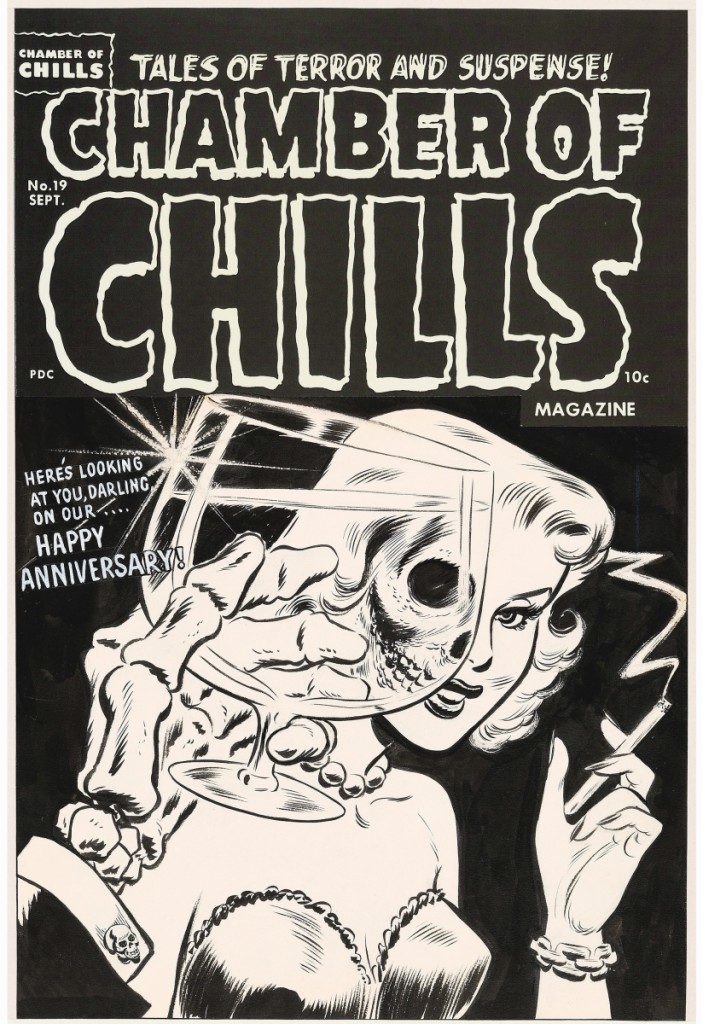
Bringing $174,000, the top end of its estimate, was Lee Elias’ ink over graphite on Bristol board cover art for Chamber of Chills #19, published in 1953. The image was reprised as the cover art for the 1984 EP “Die, Die My Darling” by the Misfits.
“Everybody thought that that was great,” Barry Sandoval, vice president at Heritage, said. “We certainly expected it would do well, but $174,000 was right at the high end of what we thought. EC is more known for horror, so when a Harvey cover gets triple the best Wally Wood EC work, that’s pretty notable.”
Jack Kirby and his inker Chic Stone brought in $120,000 with page 9 from Journey Into Mystery #112, published by Marvel in 1965. It features a stand-alone fight scene between the Hulk and Thor, which harkened back to a scene related to Avengers #3.
In comics, a Superman #1 GCG VG+ 4.5 took $348,000. The issue is the first time an entire comic was devoted to a superhero and it currently ranks number 3 on Overstreet’s Top 100 Golden Age Comics list. Among CGC-graded books, three are graded 4.5, while only 11 are graded higher. To demonstrate the meteoric rise of the genre, Heritage sold a 4.5 graded issue for $47,150 only 14 years ago.
Taking $204,000 was Action Comics #7 CGC FN 5.5 that the firm said was the finest unrestored copy of this issue that they have offered in over a decade. This exact issue was exhibit 18 in a 1939 lawsuit filed by DC against Fox and Bruns Publications claiming copyright infringement over the use of Wonder Man, which DC argued was a copy of their newly popular Superman. Bruns argued that Superman was based in historic mythology, notably Hercules, and that as such his strengths and talents were in the public domain. The district court ruled against Bruns, who then appealed to the second circuit, which ruled that the prior ruling was too broad. The second circuit ruling narrowed the scope of the judgment and said DC was entitled to relief only against cartoons “portraying any of the feats of strength or powers performed by ‘Superman’ or closely imitating his costume or appearance in any feat whatever.” Even though that ruling gave the green light to produce an original comic featuring a flying herculean superhero that does good for the public, Bruns ceased publication of Wonder Man thereafter. The ruling would set precedent for other comic-related infringement suits, including the 1951 Superman vs Captain Marvel, which took 12 years to settle in favor of DC Comics, then known as National Comics.
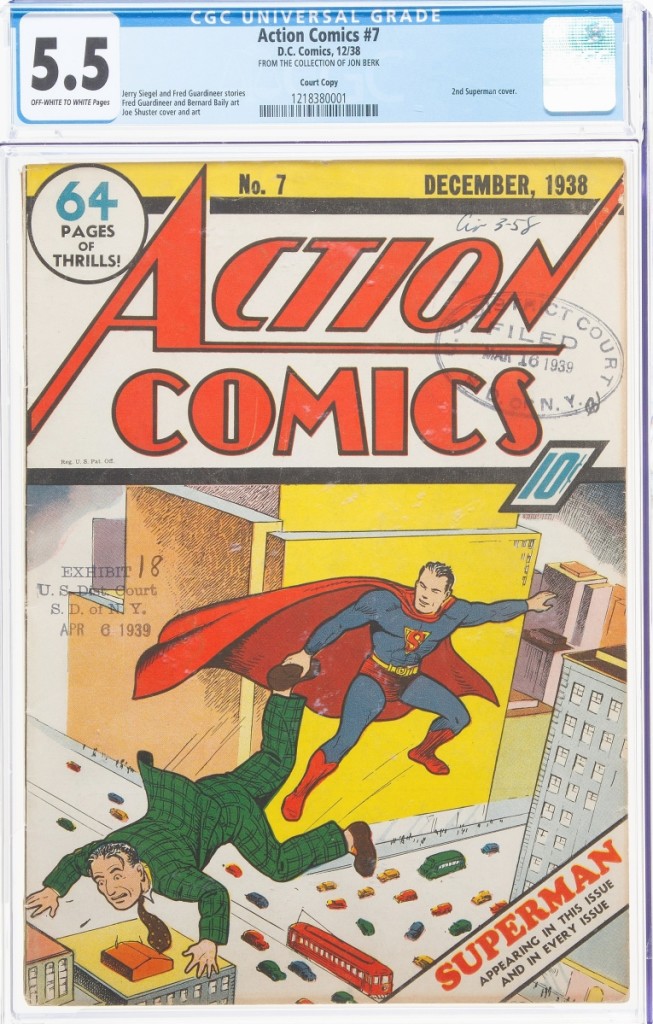
This particular copy of Action Comics #7 is perhaps more importantly known as Exhibit 18 in a 1939 lawsuit filed by DC against Fox and Bruns Publications claiming copyright infringement over the latter’s use of Wonder Man. While the lawsuit would ultimately generally allow Herculean superheros that resembled the talents of DC’s Superman, it protected Superman lookalikes and those who performed specific acts that copied DC’s original storylines. The decision would lead to Bruns discontinuing Wonder Man and would serve as precedent in the 1951 DC lawsuit against Fawcett Publications over their modeling of Captain Marvel, which ultimately was found in favor of DC and bankrupted Fawcett. The issue, graded CGC FN 5.5 sold for $204,000.
Confirmed by GP Analysis, Heritage set two notable comic records in this sale: the highest prices paid for both a 1970s and 1990s comic at auction. The former was set at $49,200 with a 1974 Marvel release of The Incredible Hulk #181 in CGC NM/MT 9.8 and the latter was set at $28,800 for a 1999 release of The Goon #1 from Avatar Press in a CGC MT 9.9 grade.
Both were in immaculate condition, but the 9.9 grade for The Goon is notable, as the rating is so seldom given out.
The firm began offering Pokémon pieces in 2016 and has seen the rise of a white hot auction market with a constant stream of new records ever since. A Pokémon first edition base set sealed booster box wowed the market when it brought a record $198,000. The booster box is the first set ever made from a very low print and includes 396 cards spread through 36 booster packs, each of which contains 11 cards.
“Sets like this one, especially in such extraordinary condition and sealed in shrinkwrap, have become undeniable rarities,” said Jesus Garcia, assistant comics and comic art operations supervisor at Heritage Auctions.
Since 2019 and the advent of a standard video game grading company in WATA, the firm has found another emerging market in video games.
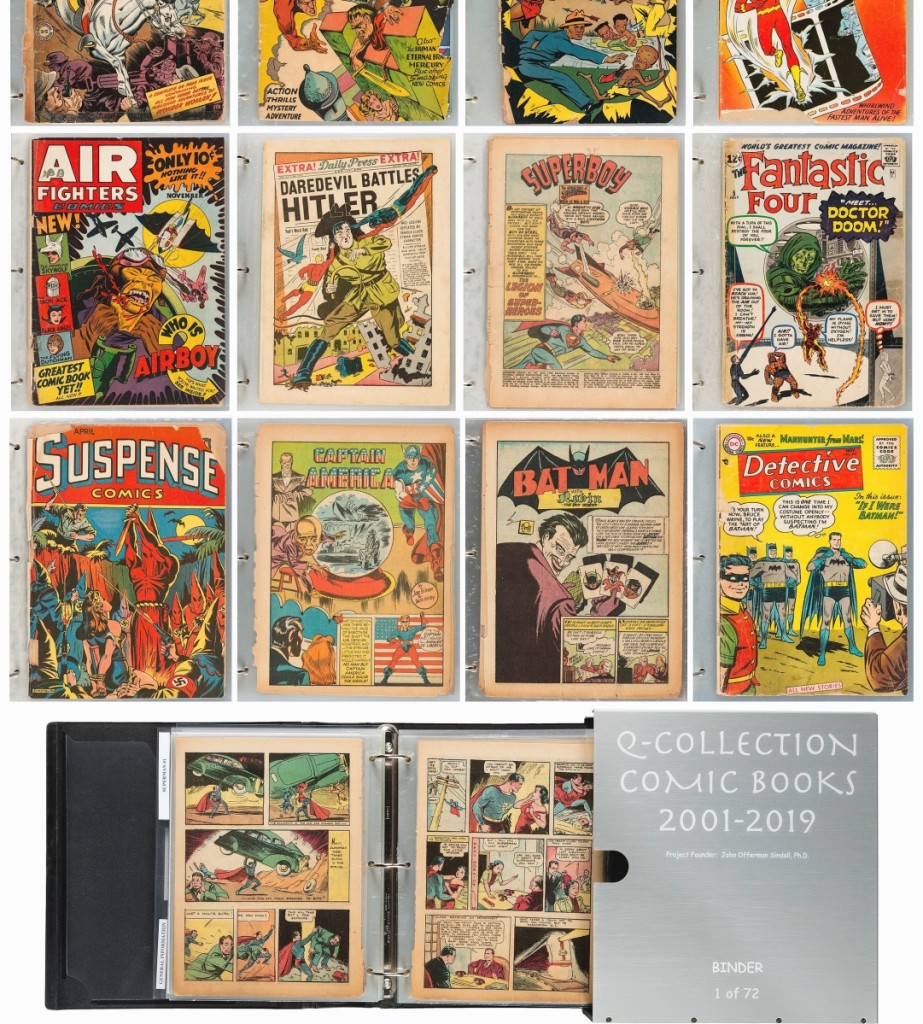
In 2001, when John Offerman Sindall, PhD found a rare 1939 copy of New York World’s Fair, the forerunner of DC’s World’s Best Comics, a restorer related to him that all comics would turn to dust with enough time — even encapsulated issues — as a result of the paper they were printed on. Thus began the Q-Preservation Project, where Sindall amassed 278 Golden Age and Silver Age key comics and 460 comic book-related items and had them disassembled and each page laminated using long-life UV resistant Mylar material. The project grew to 72 binders and the whole collection sold for $120,000.
“We’ll have an auction result that doubles the result for the same item from a half year ago,” Sandoval said. “That’s been exciting.”
Sandoval said the video games continue in the sale’s spirit, one that progresses the timeline of childhood plaything media objects. He said they bring in a whole new demographic of bidders to the auctions, namely those who grew up with video games in the 1980s-90s and are now reaching points in their careers where they have the disposable income to covet and collect rare things of their youth.
Notable sales here included a Super Mario Bros for NES copy that took $84,000 in a WATA 9.8 A+ seal. A Legend of Zelda copy in a WATA 9.6 A+ sold for $50,400, which was about 40 percent higher than the firm’s prior highest price on that title. An N-64 record may have been set on a copy of GoldenEye 007 WATA graded 9.6 A++, which sold for $22,800.
All prices reported include the buyer’s premium. For information, www.ha.com or 214-528-3500.
